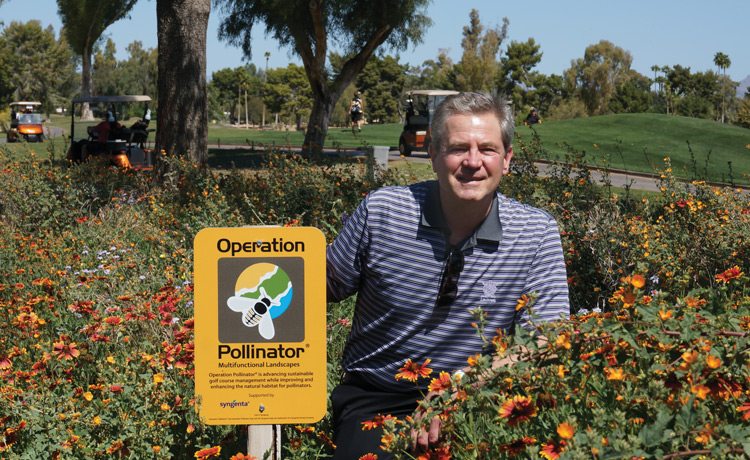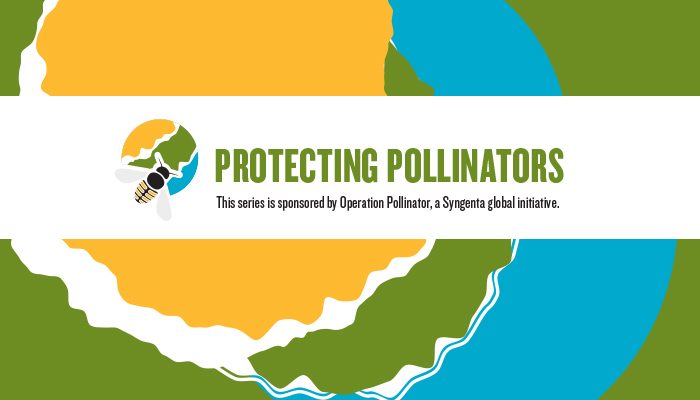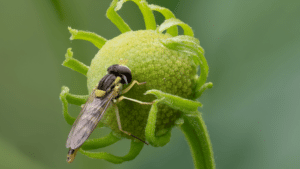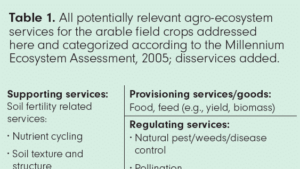Operation Pollinator looks to the green spaces inside cities and suburbs to increase pollinator-friendly environments.
Honey bees and other pollinators are capable of flying several miles to find food, but research shows boosting pollinator habitats is an important aspect in protecting pollinator populations. In response, many farmers have stepped up to create wildflower habitats on their farms as part of Operation Pollinator, a program developed by Syngenta more than 15 years ago.
But honey bees and other pollinators don’t just live on rural farmland, so Syngenta is working to expand the program beyond the farm to penetrate suburban America, and even the cities — a place where golf courses have provided the perfect partnership.
Walt Osborne, key account manager for Syngenta, says golf courses offer a unique opportunity in that they can benefit from creating pollinator habitats.
“Not only do these habitats help the environment by creating pollinator forage, but they’ve also been able to add beauty and even reduce maintenance in some areas,” Osborne shares.
Through Operation Pollinator, golf course superintendents have access to the tools and information they need to successfully establish and manage, and communicate the benefits of attractive wildflower resources crucial to pollinators.
“We’ve really seen a neat combination of benefits,” Osborne says. “We have to keep in mind that on a golf course, out-of-play doesn’t mean out-of-sight, so placing forage areas near cart paths or between tee boxes is a great opportunity to add visual interest to the course while helping the pollinators.”
Plus, there are considerable public relations benefits.
“There is a certain segment of the population that views golf courses as sort of green deserts,” says Daniel Potter, a University of Kentucky professor and entomologist. “This program provides the opportunity to use that land as some of the most natural habitats we can provide for pollinators and other wildlife.”

Habitats and Hives
In some cases, golf courses have been able to do even more than plant a few wildflowers.
Bryan Bergner, golf course superintendent of Westmoor Country Club in Brookfield, Wis., created a 22,000-square foot pollinator habitat on his course. It started out as a simple wildflower project, but the idea grew and now he manages three honey bee hives, only about 65 yards away from a playing area.
“The first hive was added in the spring of 2014, and we added two more at the end of that year,” Bergner shares. “Now, we’ve created our own little ecosystem, right here on the course.”
Creating forage is an important goal of Operation Pollinator and a goal that’s ongoing. Potter says that as of this past spring (2016), more than 200 U.S. courses across 30 states have established Operation Pollinator sites.
One of the newest adopters of the program is Marriott Golf, which has committed to establishing habitats on all its U.S. courses, and those are underway.
Osborne says pollinator plots on golf courses typically range in size from around 10,000 square feet to more than 100 acres spread across the entire course. However, most, he says, but are three to five acres or 10 to 20 acres.
To further expand the footprint, Osborne encourages both farmers and golf course superintendents to add one area of forage a year by selecting either a low performing section of farmland or an out-of-play area on the course.
Not that Different
Although the job title of “superintendent” may seem quite different than a farmer on the surface, there are many similarities between the two jobs. The effort to add pollinator forage actually translates well between the two sectors.
Passion is one key to success that players in both sectors must possess.
“Superintendents want to project a good environmental image,” Potter says, noting that they, like farmers, find value in working the land.
In the end, it’s about knowing how to best manage the land. That includes using both high- and low-performing areas.
“Whether you’re on a farm or on a golf course, dirt is dirt,” Bergner adds. “It’s pretty consistent, and you need to carefully consider what seeds will work best in your environment.”
Farmers are able to create habitats in ditches or along fences and roadsides. Golf course superintendents are working with similar areas, just on a smaller scale.
“Out of production or out-of-play, it’s a similar concept,” Bergner explains. “We’re taking areas that aren’t being used and giving them a new purpose.”
Both farmers and superintendents also must consider the specific climate and plot before choosing seed.
“The research we’ve been doing is related to the specific mix of flowers and plants that will work,” Potter says.
Osborne says golf courses may have an advantage in working with smaller sites because they can be more selective about specific seed mixes, targeting specific pollinator species, such as monarch butterflies — something Potter is passionate about.
“It’s an iconic species that needs help because they only eat milkweed, so that’s something to consider,” he says.
Potter has seen commercial seed companies step in to help engineer special pollinator mixes.
Another advantage that golf courses may have over a farm is that they are already set up for small seeding applications, and their expertise in this area could help farmers who want to invest more in pollinator habitats.
“Corn, soybeans and most other crops are all large-seeded, as opposed to some of these wildflowers, which are much smaller,” Bergner says. “Our knowledge and equipment is already specialized to that top inch of soil because we work with grass and other small seeds all the time.”
Potter attributes much of the success of golf courses planting pollinator habitats to the partnership Operation Pollinator delivers and information sharing. In fact, Potter says many of the guidelines for establishing Operation Pollinator plots have come directly from the ag industry.
“Establishing wildlife habitats is something they’ve been working on for some time,” he says. “The guidelines have translated really well from farms to these more urban environments.”
Positive Impacts
Perhaps one of most important benefits of bringing a little bit of agriculture into the urban and suburban areas is the increased interest in pollinator health.
“Once an effort starts, it will likely continue, and even grow into something bigger,” Bergner says. “I never planned on having honey bees, but this type of thing is where the golf industry needs to head in the future. We want to be proactive.”
But being proactive comes with some challenges. While farmers, ranchers, seed companies and most of the agricultural community have been aware of pollinator issues for many years, a large percentage of the general population is less informed about efforts in this area.
“Our members who come to the course … don’t have a lot of experience with the environment, other than maybe mowing their lawns,” Bergner says.
Employees are also not as informed. When Bergner suggested adding hives to the course, there was some fear and hesitation from staff who were concerned that the bees might interfere with activities on the course.
“There was a lot of education that needed to be done. We took a class at a local urban ecology center on the basics of beekeeping and that took away a lot of the concern,” he adds.
Since then, Bergner has seen the staff and members come to fully support the project. “Once we showed everyone what we were doing, the response was clearly in favor,” he says. “Now, we are able to use our habitat and hives as a way to educate students and adults who visit the course.”
Next Course of Action
Potter says he’s fielded numerous calls from horse farms, military bases and roadside crews who are interested in creating their own habitat programs.
“For one, these habitats are nice,” Potter says. “Everyone likes flowers. But it’s also a way to positively impact the environment. There are a lot of benefits and not a lot of negatives.”
As the program grows, partnerships that move beyond the farm and into the city will become even more important.
“The network of change we’re creating is invaluable,” Osborne says. “It spurs on others and creates positive change for pollinators.
“Yes, it’s something different than we’ve done before, or known before, but it’s worth it. You can’t be afraid to try new things, and it’s great for the agricultural industry to step out in this way to get involved.”













